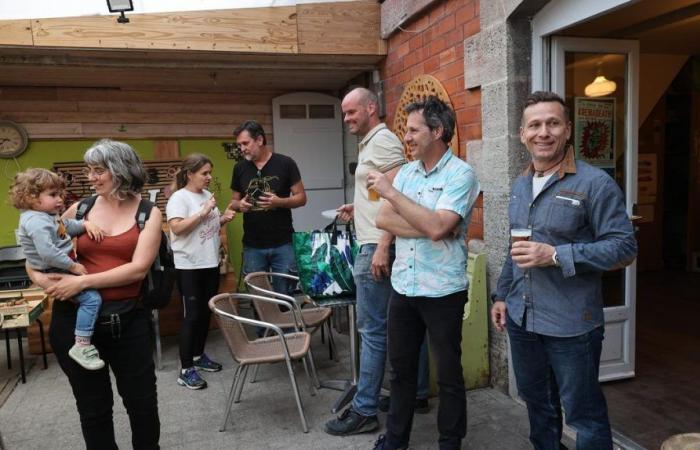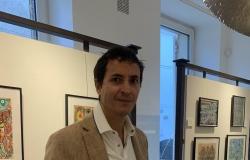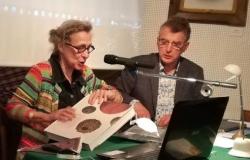> This article is taken from the 64-page special issue “A new bridge over the Garonne”, available on newsstands and in the “Sud Ouest” boutique. €3.90.
At the back of the paved courtyard, young families come and go on this Tuesday evening, the day Amap baskets are delivered to the premises of Radis noir, the associative café founded by residents in 2011. An essential rallying point, at 37 bis, rue Pauly, in the Bègles district of Marcel-Sembat, this island of shops that stands against the tide of tremendous real estate growth on its edges will be the first to be served by the Simone-Veil bridge. One does not go without the other, but both feed ambivalent feelings here: apprehension, even distrust, for the push of vertical urbanism, a completely natural curiosity for the new Floirac horizon.
SO
Auchan and Leroy Merlin will probably attract new customers along the boulevards, but, spontaneously, at the Radis noir, it is the Arkéa Arena that takes the lead among the new destinations mentioned at the start of Marcel-Sembat. “The forest of La Burthe, in Floirac, very nice places towards the island of Arcins”, adds Anne, a local government official, a thirty-something ready to ride her bike on Sundays with her family. With a bag of vegetables under her arm, two young children in her wake, Leslie sees another virtue in it, down to earth: “It will still clear the quays”, she wants to believe.
“The urban village spirit”
In “the best neighborhood in the world,” as Anne says, who lives in an apartment in La Scala, one of the rare residences in Marcel-Sembat, the arrival of the bridge, “it’s perfect,” readily praises Yannick Grandjean, one of the founding members of Radis noir, 51 years old, quality engineer in aeronautics. “It’s going towards the other, and it’s also the other who comes towards you.” He admits however to being “a little expectant”: “For us, it’s the urban side that prevails, and we try to keep the “urban village” spirit, as the slogan of the City says. It’s a real belief among us, we would like to spread this good humor, a certain idea of cosmopolitanism,” he defends.
Fabien Cottereau/SO
Rue Pauly, in the heart of the Marcel-Sembat district, in front of the gates of the Radis noir, with a view of the hills of the right bank in the background.
A proud “citizen” district, crossed by various associations, from the neighborhood committee to the Radis noir, via the Jardin éphémère, another activist center, Marcel-Sembat is historically anchored on the left. A glance at the results of the last European elections to convince yourself: polling station number 6 showed 23% of the votes for Glucksmann (PS-Place publique), 16.7% for Toussaint (EELV), 14% for Bardella (RN), 13.8% for Aubry (LFI), 13.1% for Hayer (presidential majority) or 4.6% for Deffontaines (PC) (1).
If Yannick Grandjean expresses, implicitly, the fear of seeing the identity of Marcel-Sembat undermined, it is because the Simone-Veil bridge quickly refers to the contours in full effervescence of the old working-class district. After having invested the surroundings of the Saint-Jean train station and the right bank, the public development establishment Euratlantique is working on the 77 hectares of the future concerted development zone (ZAC) promised to Bègles, at the level of the quays. A crucial issue: between 4,000 and 5,000 housing units are announced there by 2040.
“Mixed” feeling
The bridge, which connects the Euratlantique perimeter between Bordeaux, Floirac and Bègles, leaves Virginie, 43, a coordinator in the medical-social field, with a “mixed” feeling: “I don’t want to have eight-storey towers around my house. A bridge means the emergence of the neighbourhood, and Euratlantique. We’re not against urban densification, but there is a limit: we won’t be able to welcome people here properly.” To those who might be tempted to label Marcel-Sembat’s front as a “Gallic village” surrounded by trees, Yannick Grandjean resolutely opposes the need to “support developments”.
But, scalded by the urban planning choices that presided over the redesign of Amédée-Saint-Germain, in Bordeaux, on the other side of the boulevards – minerality and number of floors of the buildings –, two groups of associations in the district, Ville 3D and Euratlantide, are watching over the future of the ZAC béglaise, even if it means overtaking, on his left, Clément Rossignol Puech, the ecologist mayor and, incidentally, chairman of the board of directors of the EPA Euratlantique.
Housing crisis
Opinions remain divided, however, including when it comes to delivering the daily fruit and vegetable baskets. Anne, again: “I can find everything I need within 500 metres. Events every weekend and wonderful people, a social spirit, and a crazy mix at school, children from families who live in squats and others who have swimming pools,” she illustrates in a burst of enthusiasm. “Not everyone has the opportunity to live out their eco-commitment. Even in the countryside, you have to take the car.”
“I don’t want to have eight-story towers around my house. Who says bridge says emergence of the neighborhood, and says Euratlantique”
A plea that she cannot bring herself to oppose to the designs of Euratlantique: “We know about the housing crisis, and I am not against the idea of welcoming new people, nor against the idea of seeing buildings rise in height.” After the Simone-Veil bridge, another bridge will have to be built between “old” Marcel-Sembat and the Euratlantique in Béglais, but it will have to be done in urban planning terms.
(1) Nationally: 13.8% for Glucksmann, 5.5% for Toussaint, 31.4% for Bardella, 9.9% for Aubry, 14.6% for Hayer and 2.4% for Deffontaines.






